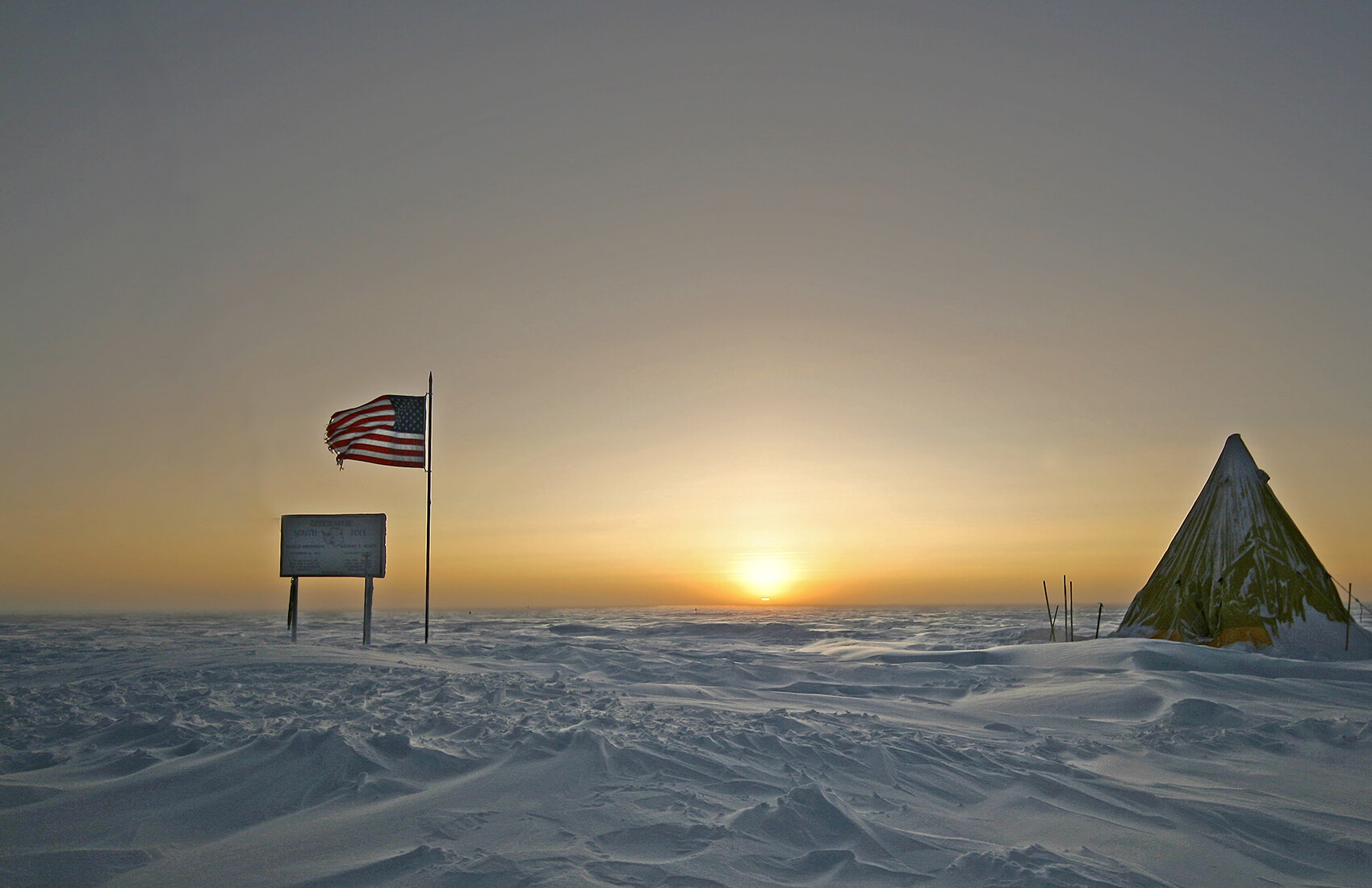After 6 months of ‘night’, the sun is an odd sight on the horizon and seeing it a bit of a watershed moment. So says Keith, in his blog Life at the South Pole: “It’s a strange sensation to see the sun again after 6 months without it. Not as strange as having its light back, but still a little odd. It feels a bit like I just found a long lost toy from my childhood, a companion from years ago. I wonder if I’ll get that every morning when I (get back to) the real world…”
A Single Sunrise. A Single Sunset
The South Pole experiences dramatic seasonal swings in the sunlight it receives because the Earth’s axis of rotation is tilted with respect to its orbit around the sun. For six months of the year the sun never rises and for six months it never sets. For scientists braving the winter at Amundsen-Scott South Pole Station, sunrise comes once a year, at the autumnal equinox* and it’s quite an event.
Assuming clear skies and atmospheric refraction (the bending of light rays as they penetrate through the Earth’s atmosphere), the sun can be seen as much as two days earlier than the official equinox time. However, storms and atmospheric conditions at the geographic South Pole can greatly alter when, and if, the first glimpse of the sun is seen as it crosses the horizon.
This year the sun will officially rise on September 21, at 5:26 AM (local time). Each day it will get higher above the horizon until the Southern Hemisphere summer solstice in December when it reaches it’s zenith of 23.5 degrees. After the solstice, the Sun will sink toward the horizon a little more each day, until it finally sets beneath the horizon on the March (vernal) equinox.
The ‘Green Flash’
If the weather cooperates, Polies will be treated to a phenomenon that few of us get to see, the ‘green flash’. This a highlight of a South Pole sunrise or sunset. The atmosphere bends the different wavelengths (colors) of sunlight slightly differently, giving a near invisible fringe of green to the top of the orb. Ordinarily, it’s far to faint to see right next to the full brightness of the sun, but at sunset, very rarely, the sun will be obscured enough that for the last moment before it disappears completely, you can make out a faint green band.
In the mid-latitudes, this “green flash” lasts only for an instant, and is rare enough that it has become somewhat mythologized. Jules Verne once described it as “…a green which no artist could ever obtain on his palette, a green of which neither the varied tints of vegetation nor the shades of the most limpid sea could ever produce the like! If there is a green in Paradise, it cannot be but of this shade, which most surely is the true green of Hope.” A little over the top, perhaps, but you get the idea. At the South Pole, instead of a 1/2 second green flash, they have about 5 hours to view the dancing green and even blue edges on top of the sun.
Warmth – and Aircraft – Return
Surface air temperatures as cold as -75C (-100 F) are typical into September and the coldest temperatures of the year are often recorded just prior to the sun’s return. The welcome sunlight will warm the polar air at South Pole and when the surface temperature reaches -50C (-58F) the ski-equipped Hercules LC-130 aircraft can begin summer re-supply flights from McMurdo station (on the Antarctic coast).
The Height of Summer
ALE’s South Pole Flights take you to the Pole at the height of summer (November – January) when the sun circles the sky and temperatures reach a balmy -17.5°F (-27.5°C). On December 21, the sun will reach it’s zenith of 23.5 degrees above the horizon. While you won’t see a sunrise, you may be treated to other atmospheric phenomena, such as sundogs (parhelia) or halos, caused by the refraction of light passing through ice crystals. Nothing quite prepares you for the South Pole – even at the height of Summer.
More about South Pole Sunrise/Sunset
Keith’s Blog: Sunrise http://australyear.blogspot.ca/2008/09/sunrise.html
ArcticAntarctic Blog: http://antarcticarctic.wordpress.com/2013/03/21/sunset-at-the-south-pole/
Photos of the South Pole approaching sunrise: http://antarcticarctic.wordpress.com/
South Pole webcam (live): www.esrl.noaa.gov/gmd/obop/spo/livecamera.html
*Note
By convention, the equinoxes are named for the seasons in the northern hemisphere. The autumnal equinox takes place on September 21-22; the exact calendar date of the equinoxes varies from year to year.





